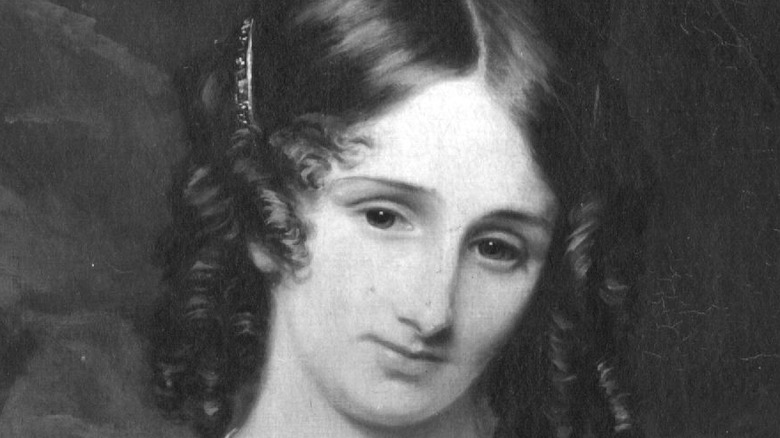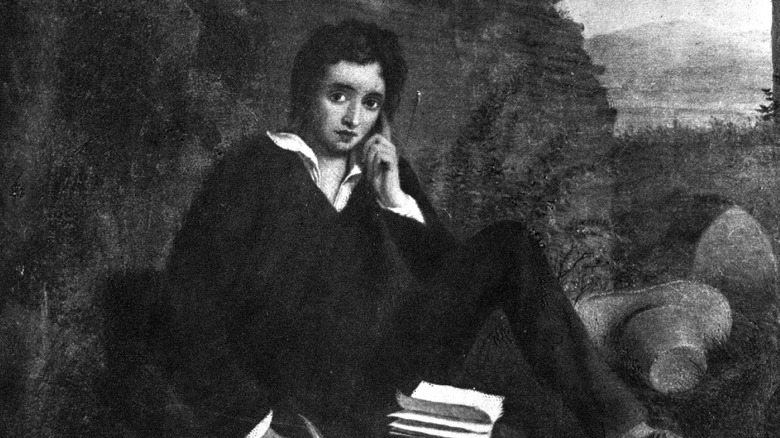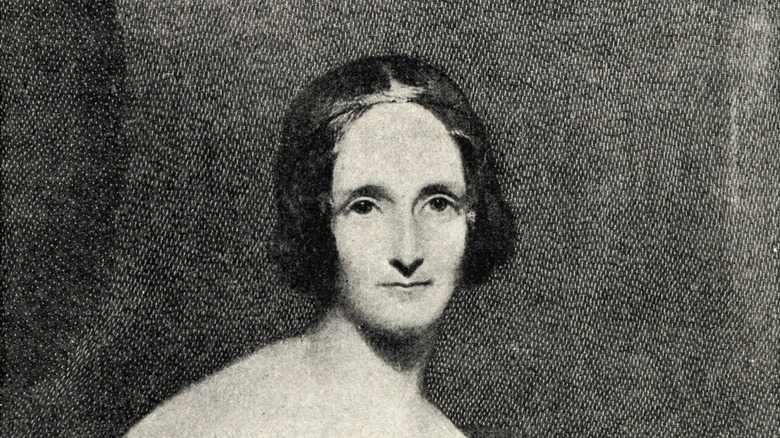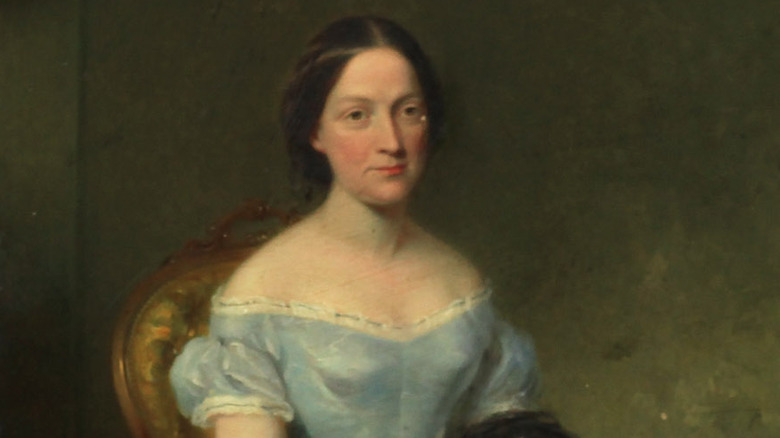The Tragic Truth About Frankenstein Novelist Mary Shelley
Mary Wollstonecraft Shelley was a writer who pushed against the expectations of her time. She wrote seven novels, countless short stories and articles, and contributed to editing the works of her husband, Percy Bysshe Shelley. With her 1818 novel "Frankenstein; or, The Modern Prometheus," she managed to write one of the most powerful literary works of the 1800s, despite her gender and lack of prestigious education.
Mary's ability to write a defiant, haunting novel like "Frankenstein" may have been partly intertwined with the fact that her life was marred by rebellion and tragedy from start to finish. Her mother, Mary Wollstonecraft, was also an influential writer whose most notable work, "A Vindication of the Rights of Woman," is regarded as one of the earliest examples of feminist philosophy. Wollstonecraft died 11 days after her namesake daughter was born due to complications of childbirth, according to The Guardian. Mary's father, William Godwin, was a political philosopher with many anarchist ideas. But Mary's teenage elopement with Percy was too unconventional even for her father, as he cut her off "until she was respectably married," per The Guardian.
Even two centuries after the publication of "Frankenstein," Mary Shelley does not always receive the respect or recognition she deserves as a trailblazing writer. Here are a few unfortunate truths about Mary, her life, and her legacy.
Mary Shelley has often been cast under her husband's shadow
Despite writing such an influential literary classic, Mary Shelley has often been viewed and discussed in relation to her husband, the Romantic poet Percy Bysshe Shelley. According to Lit Hub, a teenage Mary met Percy, who was married with a young child at the time, in the early 1800s. The pair ran away to elope in 1814, when she was 16, and he was 21.
Mary began writing "Frankenstein" just two years later, when she was 18, and finished it when she was just 19. Critics have long questioned how a teenage girl could have written such a profound, symbolic, and masterful work of fiction, and some have even suggested that she couldn't have and didn't. John Lauritsen's 2007 book, "The Man Who Wrote Frankenstein," explores the theory that Mary's husband, Percy, was the writer behind the novel, as noted by Wired. According to an op-ed by poet Fiona Sampson for The Guardian, some historians and critics have pointed to Percy's corrections during the "Frankenstein" writing process as proof of his role in the work. But Sampson writes that "Percy did rather less than any line editor working in publishing today."
Most of Mary Shelley's children died in infancy
At age 16, upon her elopement with Percy Shelley and two years before she began writing "Frankenstein," Mary Shelley became pregnant. When the baby was born on February 22, 1815, Percy wrote in Mary's journal that the baby was born prematurely, "not quite seven months," and therefore did not have a strong chance of survival, per Lit Hub. Astonishingly, the baby went on to live for nearly two weeks.
According to The New Yorker, Mary recorded her daily activities during the baby's life: "Nurse the baby, read," she wrote each day. But she never gave the baby a name. Eleven days after the baby was born, Mary wrote in her diary, "I awoke in the night to give it suck it appeared to be sleeping so quietly that I would not awake it." The following morning, she wrote, "Find my baby dead." And that night: "Dream that my little baby came to life again; that it had only been cold, and that we rubbed it before the fire, and it lived," she wrote. "Awake and find no baby."
Later, Mary also suffered a severe, life-threatening miscarriage. Ultimately, she gave birth to four children, three of which did not survive beyond infancy.
The people Mary Shelley loved most died young
Mary Shelley was well-acquainted with the tragedy of premature death. In addition to the deaths of three of her infant children, Mary grieved the deaths of the adults she loved most. In 1816, when Mary was just 18 years old, she received a worrying letter from her half-sister, Fanny Imlay, per Wordsworth. Fanny had traveled to the Mackworth Arms inn in Swansea, Wales, where she had overdosed on opium.
Four years later, on July 8, 1822, Percy Shelley drowned while sailing his boat, the Don Juan, near Italy during a vicious storm, per The Guardian. He was 29 years old. Two years after that, the Shelleys' dearest friend, the poet Lord Byron, died from a fever in Missolonghi, Greece, per Britannica. Mary wrote in her 1826 science fiction novel "The Last Man" that the narrator was "the last relic of a beloved race, my companions extinct before me."
By 1840, Mary Shelley was living in England and struggling both financially and physically. According to The Washington Post, she described experiencing "a pressure on the brain" as early as 1843, but rather than turning to medical treatment, she turned to home remedies like cod liver oil. Living in poverty, she wrote in a letter around that time about "fate always doing her worst against me." Mary Shelley died in 1851, at the age of 53, of an undiagnosed brain tumor.



